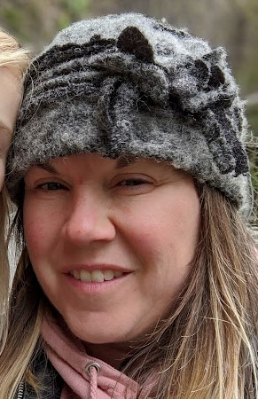Meet Dr Penny Cristinacce – NCITA Research Fellow and MRI Core Lab Lead
Tell us about your role in NCITA?
I am a Research Fellow and MRI Core Lab Lead in the NCITA QA/QC Unit, based at the University of Manchester. My role is focused on the development of quality assured processes, SOPs and documentation for MRI scanners which will be used in NCITA’s adopted and exemplar studies. I am also involved in the development of the quality monitoring system on Q-Pulse.
What is a typical week like for you as a Research Fellow and MRI Core Lab Lead?
A typical week involves developing methods to assess the quality of end-to-end imaging processes and quality control of imaging data, with the aim of making the qualification process as easy as possible for the end-user. I work closely with the NCITA Repository Unit on quality control procedures for the XNAT data storage and analysis platform. I attend weekly virtual meetings with colleagues in the QA/QC unit and also participate in regular meeting at the University of Manchester to discuss quality management and methodologies relevant to NCITA. I work part-time and have adopted hybrid working, where I work both from home and go into the office at the University of Manchester a few times per week.
What do you like most about your role?
Having been frustrated for some time that quantitative MRI has generally not translated to clinical application, I really enjoy being involved and actively contributing to making the translational leap for MRI. I think now is a great time to be involved in this research challenge, as the emphasis is finally shifting more to repeatability and reproducibility of data rather than just novel methodologies.
How did you get to where you are today?
I am a chemist by training. My PhD involved the study of sub atomic muons (elementary particles that survive for only 2 millionths of a second!) using muon spin resonance spectroscopy. I then moved to New Zealand where I worked as a postdoctoral scientist on nuclear magnetic resonance (NMR) methods. I then moved to Manchester where I have worked for many years on quantitative MRI methods including diffusion, arterial spin labelling (ASL), dynamic contrast-enhanced MRI (DCE) and oxygen-enhanced MRI (OE-MRI), as well as diffusion phantom development. I think my broad range of expertise has been really helpful in appreciating the issues involved in the clinical translation of quantitative MRI techniques.
Hobbies/interesting fact
I used to be a gymnast when I was young. Now I enjoy walking in the Peak District. I am also actively involved in the local Transition group, working with the community to address adaption and resilience in the face of climate change.


